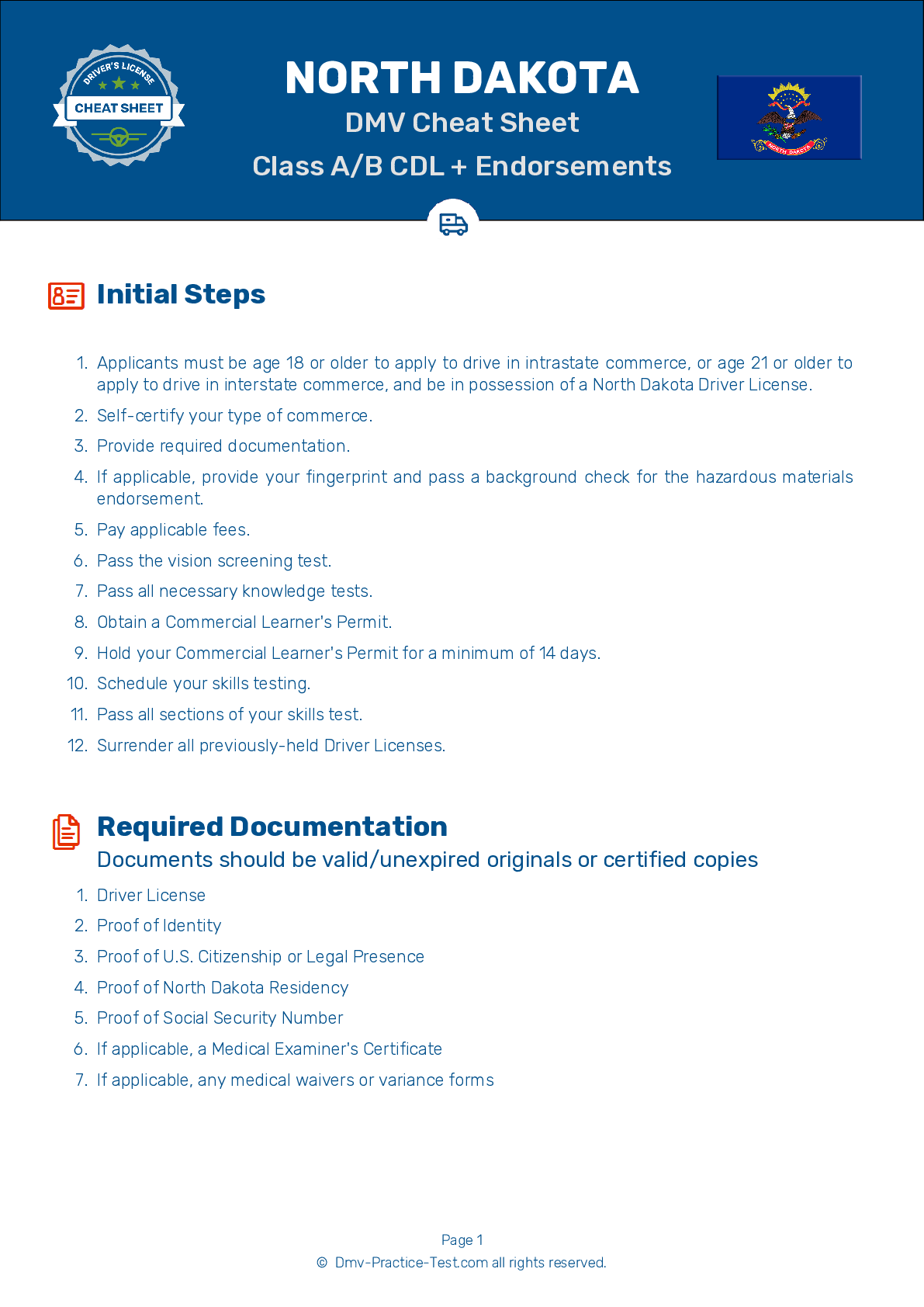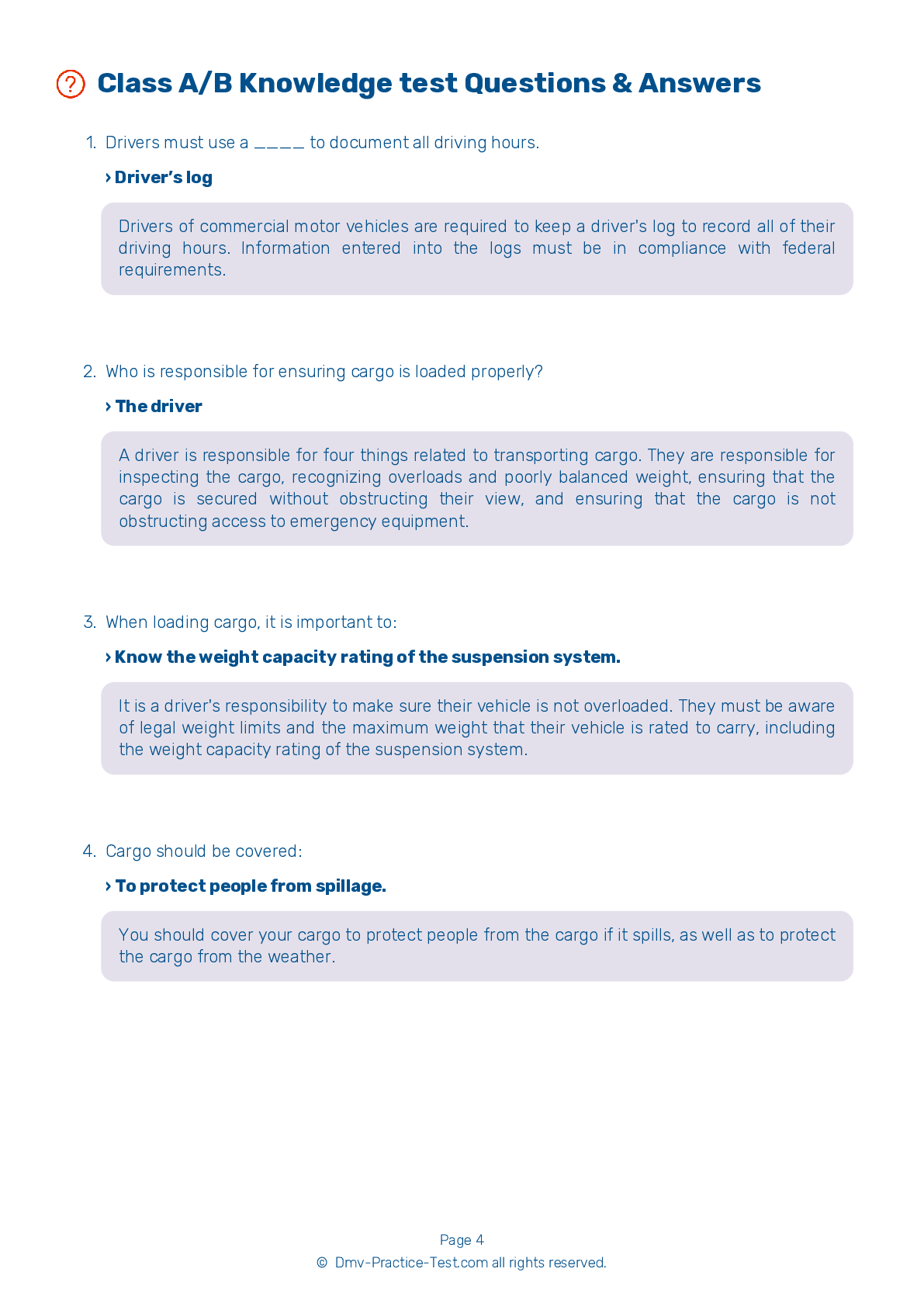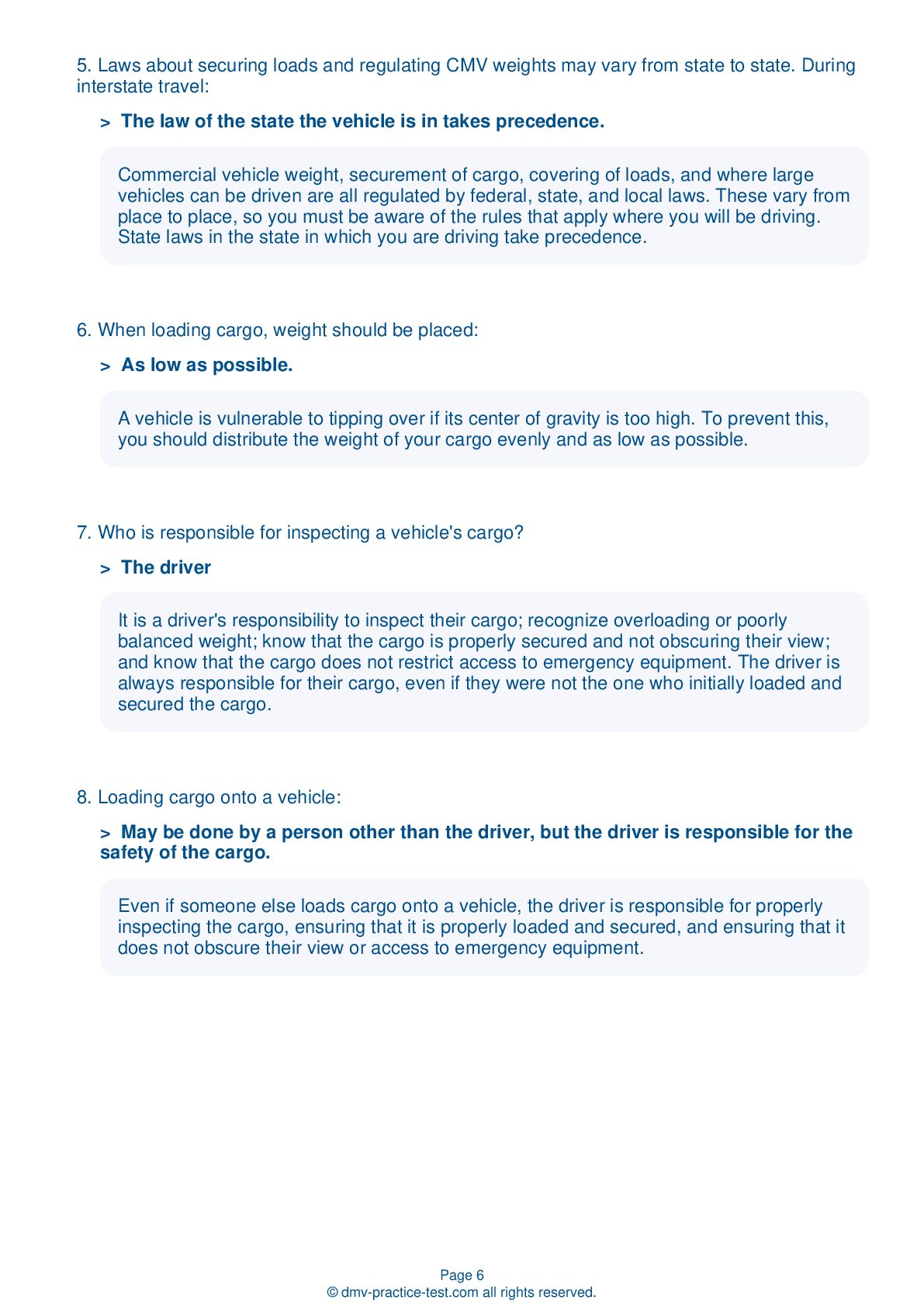Class B Driving Test | North Dakota 2025 #2
Train for FREE online with our North Dakota class B license test. The official exam test consists of several obligatory parts, with all of them checking your knowledge of different blocks of road rules. If you need to obtain a ND CDL class B permit in 2025, practice as much as possible. Free sample tests published on our website will help you check and improve your knowledge and boost your grades. Please bear in mind that CDL class B requirements may vary from state to state.
1 . The air compressor governor controls:
In an air brake system, the air compressor governor controls when the air compressor pumps air into the air storage tanks.
2 . To use the controlled braking method, you should:
The method of controlled braking involves applying the brakes as hard as you can without locking the wheels. If you need to make large steering adjustments while using controlled braking, you should remove your foot from the brake pedal, steer, then reapply the brakes.
3 . To make a stop in a vehicle using air brakes, the driver should:
To make a normal stop in an air-braked vehicle, push the brake pedal down and control the pressure so that the vehicle comes to a smooth, safe stop.
4 . An Anti-Lock Braking System (ABS):
Anti-Lock Braking Systems (ABS) are compatible with air braking systems. ABS helps maintain control of a vehicle and prevents the wheels from locking up during hard braking on slippery surfaces. ABS can still provide benefits even if is present on only one axle.
5 . When checking your tires, which of the following is not an issue to correct?
Problems to check for when inspecting tires include: air pressure that is too low or too high; using radial and bias-ply tires together; tread depth of less than 4/32 of an inch in major grooves on front tires; and tread depth of less than 2/32 of an inch on all other tires.
6 . A commercial motor vehicle should:
Vehicles must be equipped with the appropriate emergency equipment. When inspecting a CMV, you should check for at least one fire extinguisher; spare electrical fuses, unless the vehicle is equipped with circuit breakers; and the appropriate warning devices to be used when the vehicle is parked.
7 . Friction inside a brake drum is caused when the brake shoes and linings:
Friction inside a brake drum is caused when the brake shoes and linings push against the inside of the drum. The friction in the drums will slow and stop the vehicle.
See the exact questions that will be on the 2025 North Dakota DMV exam.
99.2% of people who use the cheat sheet pass the FIRST TIME
Lillian MCcranie explains how our CDL study guide was helpful in passing the exam and recommends it to everyone.
Cameron tells us how he purchased the CDL exam, and found it to be a useful tool which helped him pass the exam and find a job.



